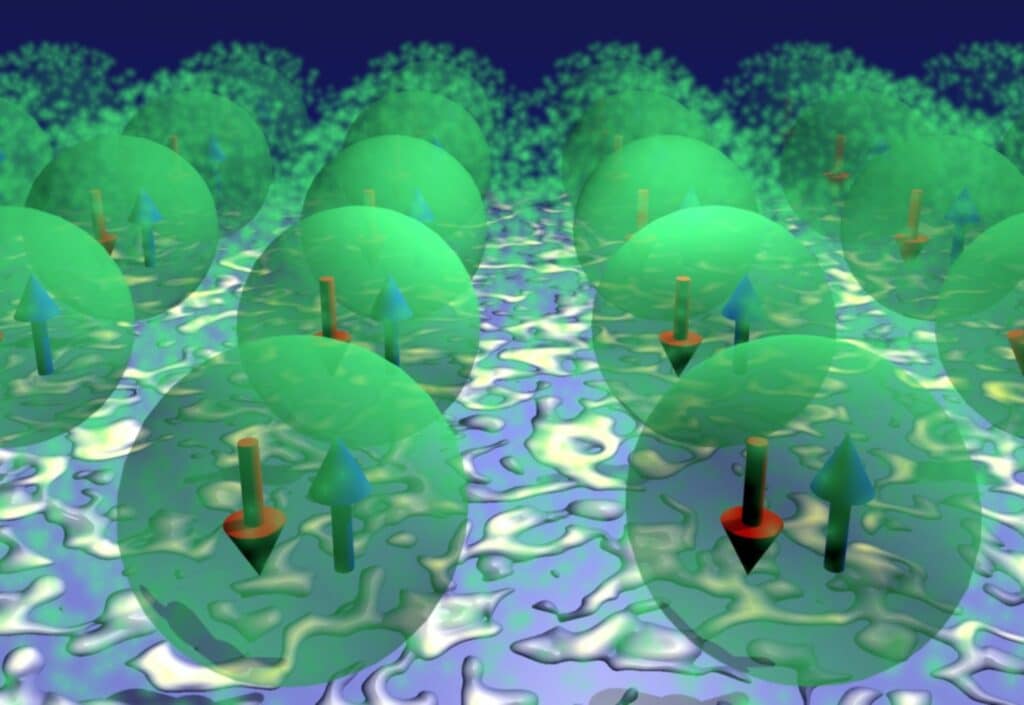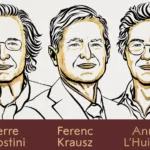Unlocking Quantum Mysteries: Triplons Explored in Engineered Quantum Magnets
Researchers from Aalto University and the University of Jyväskylä in Finland have achieved a remarkable feat: crafting organic molecules into an unconventional type of magnet. This innovative approach has provided a unique vantage point for observing a rare electronic state known as a triplon.
A Quantum Puzzle: Beyond Ordinary Magnets
When we think of magnets, a typical mental image forms: two poles connected by magnetic field lines. However, the realm of quantum magnets shatters this simple notion. Quantum magnets defy convention and introduce an element of uncertainty, reminiscent of a spinning roulette wheel in a dimly lit casino. In this quantum landscape, all outcomes remain uncertain until the final verdict is declared.
Adding to the intrigue, properties on one ‘wheel’ of this quantum casino are entangled with properties on others, leading to unexpected connections. Unlike traditional magnets with well-defined north and south poles, quantum magnets boast properties that make them invaluable for investigating elusive phenomena that elude detection in most environments.
Triplons: The Enigmatic Players
Among the peculiar behaviors in this quantum realm, one stands out—the dance of triplons. Imagine reaching into the atomic bag and pulling out an electron. With two possible spins or angular momentum flavors, an electron can either cancel out its counterpart or, in the presence of a third electron, create a novel twist, forming a doublet. However, if the initial pair shares the same spin, they synergize into a triplet state.
Though these triplets usually inhabit separate atomic orbits, physicists treat their characteristics collectively, labeling them as quasiparticles—particle-like entities. This context gives rise to triples, treating the spins of triplet states as individual entities capable of intriguing behaviors. Entwined across a material, these triplons exhibit fascinating surges and movement patterns.
Triplons Unveiled: A Quantum Breakthrough
Yet, capturing these wave-like behaviors outside theoretical frameworks presents challenges. Enter the researchers, who ingeniously constructed quantum magnets from a blend of cobalt atoms and phthalocyanine molecules. This approach set the stage for electrons to interact as triplon quasiparticles, allowing their unique properties to ripple through the solid material.
Robert Drost, lead author of the study and an applied physicist from Aalto University, notes, “Using simple molecular components, we’ve unlocked the potential to engineer and explore this intricate quantum magnet in unprecedented ways, uncovering novel phenomena absent in its isolated constituents.”
While traditional magnets might not tremble before this revelation, the implications extend far beyond refrigerator adornments. Quantum electronics, with their mysterious intricacies, are emerging as valuable assets in realms like computing and encryption.
A Quantum Leap in Possibilities
In the pursuit of quantum technology, understanding and manipulating quasiparticles is indispensable. The strategy employed by the researchers showcases the deliberate design of materials that introduce groundbreaking opportunities in the quantum landscape. According to Jose Lado, head of the Correlated Quantum Materials research group at Aalto University, “This approach highlights our ability to purposefully create material platforms that unveil untapped potentials in quantum technologies.”
In a world where uncertainty reigns and quantum mysteries abound, these pioneering insights into triples could shape the future of technological innovation. As our knowledge of the quantum realm expands, so does our capacity to harness its unique properties for transformative advancements.
This research was published in Physical Review Letters.






